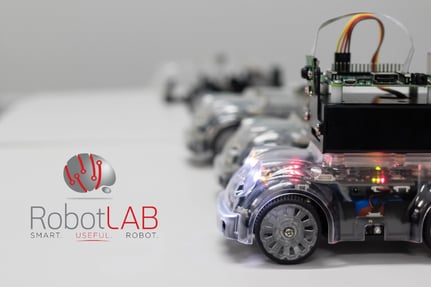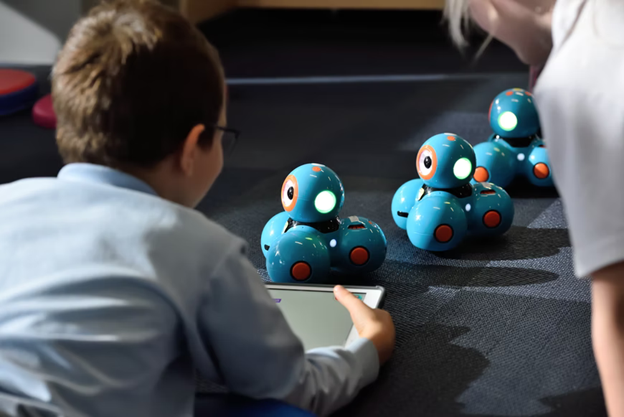By Dan Matthews
Teaching in a STEM environment is tricky. No matter how hard you try, it always seems as though some students just can’t resonate with the learning material, or have had so many negative experiences with STEM in other classrooms that they’re unwilling to try due to fear of failure or embarrassment.
This is a problem for society, as well as teachers. Many of the social issues we face require STEM-oriented solutions, yet our education system consistently produces students who feel alienated from STEM subjects, and 52% of students report that it’s too difficult.
In reality, these students probably can achieve great things in STEM fields — they just didn’t connect with the subject matter at school. As a teacher, you can overcome this by foregrounding practical application in the classroom. This will help recapture the imagination of alienated or undermotivated students and will help lift the mood in the room.
Practical Application Helps You Teach
Richard Feynman was one of the forefront public teachers of the 20th century. He delivered hundreds of physics lectures through PBS, and found that the best way to teach is “to be chaotic.” Of course, you need to have a well-established curriculum and lesson plans, but within those plans, you should strive to connect with students who have different interests and ways of learning.
One of the best ways of connecting with students who don’t learn well from textbooks and lengthy lectures is to interject practical applications into your lesson plan. The easiest way to do this is simply to give students hands-on experience.
By giving students hands-on experience through experiments, you help them see the ways that STEM matters in the world. This can be as simple as filling up a warm cup to exhibit the movement of heat or as complex as programming a robot to complete movements.
Inspire
We’ve all wanted to be the teacher who can dance on tables and get students singing “O, Captain!” But the reality is that inspiring students has more to do with making meaningful connections between subject materials and their lives or prior knowledge. These kinds of “lightbulb” moments are rare but can be made more common by using practical applications in the classroom.
Creating these kinds of inspirational moments is even more important amongst younger students who need a helping hand to understand why they’re learning difficult content. STEM is a crucial life skill for these young learners, as more occupations than ever require proficiency in STEM.
By mixing practical application into the lesson plan recipe, young learners are given the best opportunity to learn in a way that sticks and they will be drawn towards STEM classes when they make decisions about courses in High School and College.
It’s Fun
Fun is deeply underrated in the classroom. Having fun isn’t just a chance to “take it easy” for a class — research shows that having fun is a key component in the learning process. As such, it is your job to create an atmosphere where pupils cherish the time they spend in your classroom, and actively enjoy the activities you plan.
Of course, “having fun” in the classroom looks rather different than having fun in the playground. But, you should still find ways to play low-stakes games that are based on the content in your class and are engaging for all students, rather than the few “stars” who come more naturally to the content.
By building fun into your syllabus, you can create an atmosphere of engaged learners and can avoid the dreaded stale and stressful STEM classroom that reduces engagement and hampers learning.
How
Knowing that you wish to build practical applications into your lesson plan is one thing; doing it is another. It is always a good idea to try out your own inventive teaching approach, but there are also tried and tested steps you can take to create a stress-free and learning-rich environment.
Field Trips
Field trips have long been the highlight of the semester for students. But, for teachers, they can be a logistical nightmare that ends up creating hours of extra work. You have to prove that your field trip has a clear educational benefit, and need to complete all of the safeguarding steps that your school and district require.
One of the best ways to ensure a field trip helps your class is to ensure that the trip connects students to content on a personal level. For example, if you’re teaching a section on climate science, you should consider partnering with your school’s outdoor program and plan a sustainable camping field trip. This field trip can connect the science behind excess carbon and environmental damage by teaching students practical steps like following the 3Rs and advocating for environmental protection in policymaking.
In the Classroom
If an outdoor excursion doesn’t suit your teaching style or risks ostracizing students who cannot easily navigate the outdoors, then you should consider turning your classroom into a practical learning environment. This sounds difficult but is really rather simple.
For example, if you’re teaching geometry class, you may consider connecting geometry to the real world by bringing in different 3D and 2D shapes or models which exhibit the content you’re covering. This may be as simple as cubes and rhomboids, or as complex as model suspended bridges.
Conclusion
The way you build practical applications into your classroom depends on the resources available to you and your imagination. You can draw inspiration from resources like NASA’s bank of activities, or you can coordinate with the school and district to plan a field trip.
Regardless of “how” you make practical applications present in your classroom, students will find the content more interesting, and you may inspire those students who have been disengaged or unwilling to invest their imagination and effort into STEM classes.
Learn more about About STEM with RobotLAB
K12 students will graduate into a workforce that’s rife with technology in an era where robots and AI will become widely used in our everyday lives. RobotLAB is committed to bring this technology to the students and, enhance their experience with tools that truly bring learning to life. Discover more by searching for lesson-plans for any subject, any age group, and any robot.




